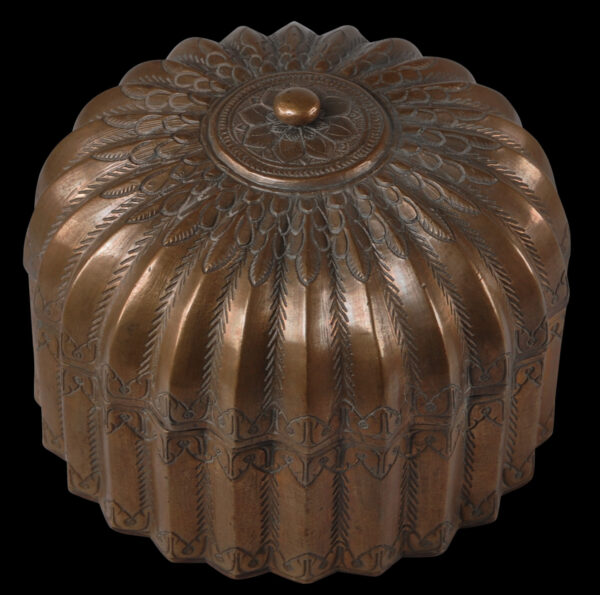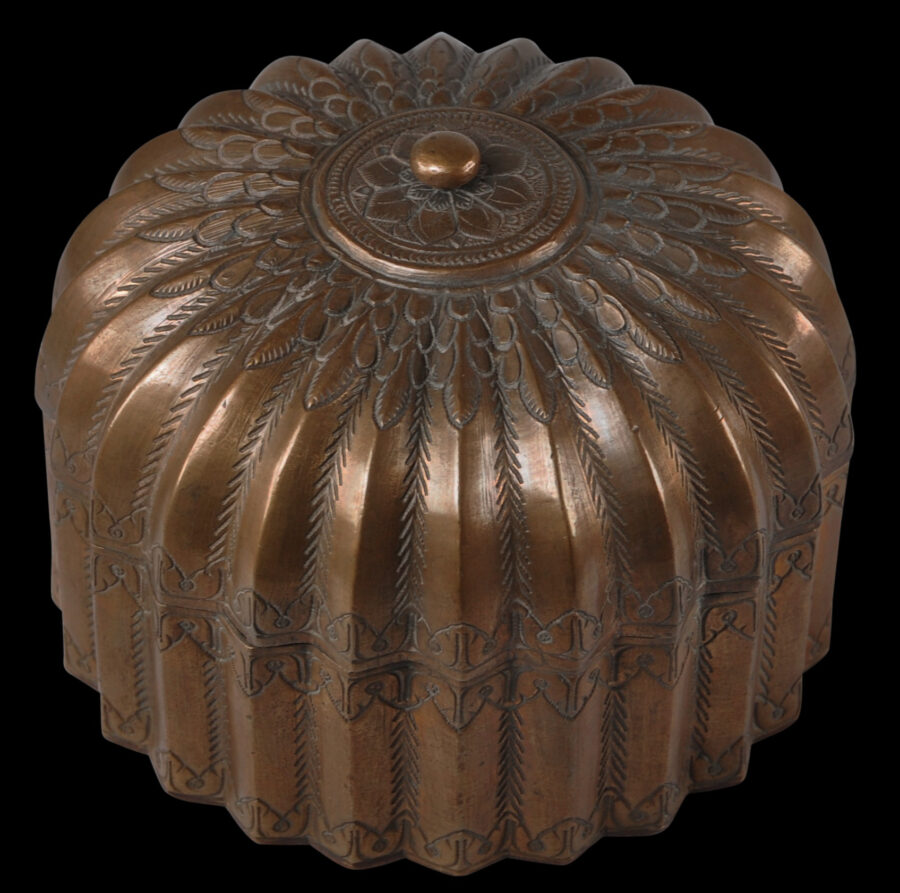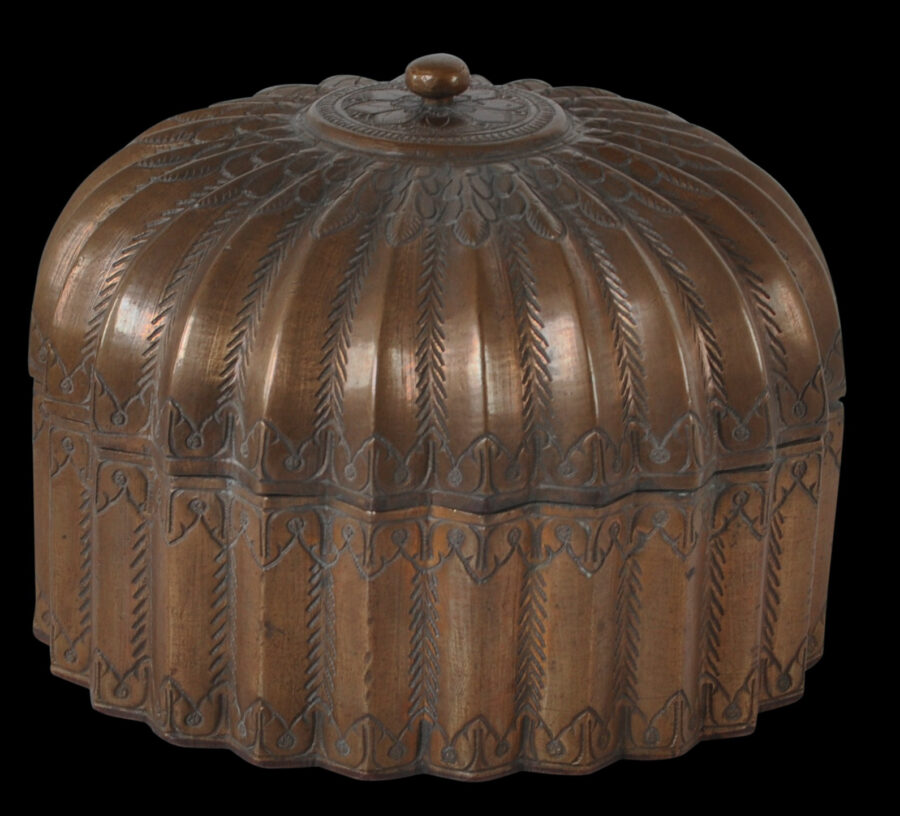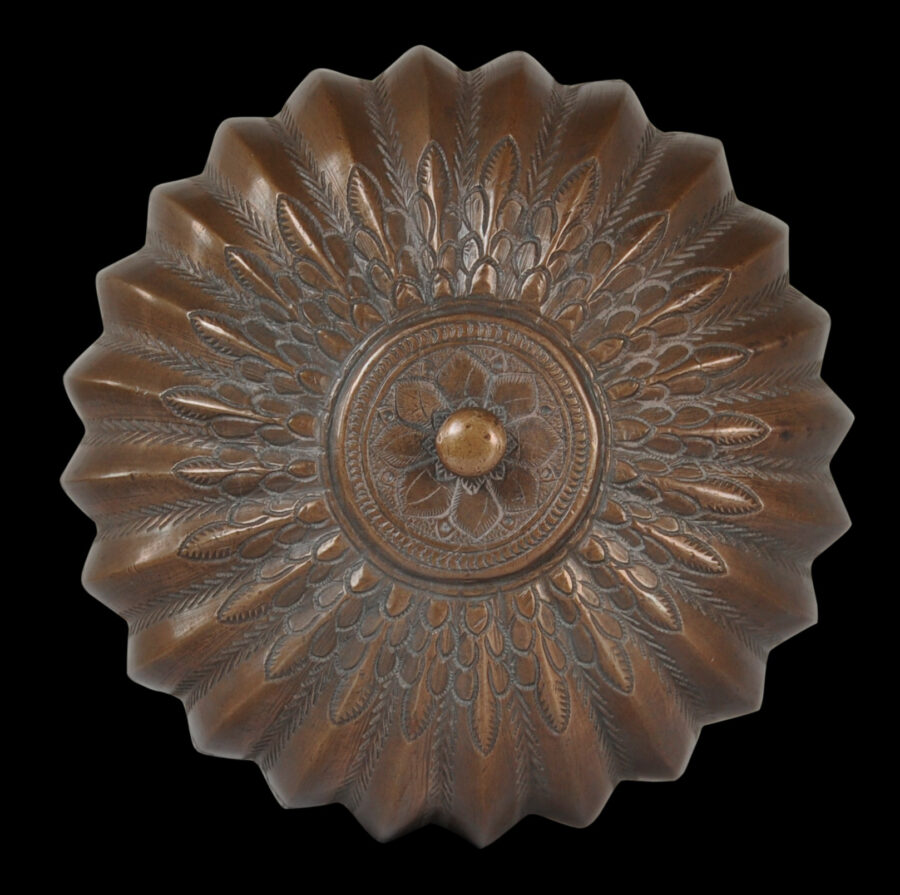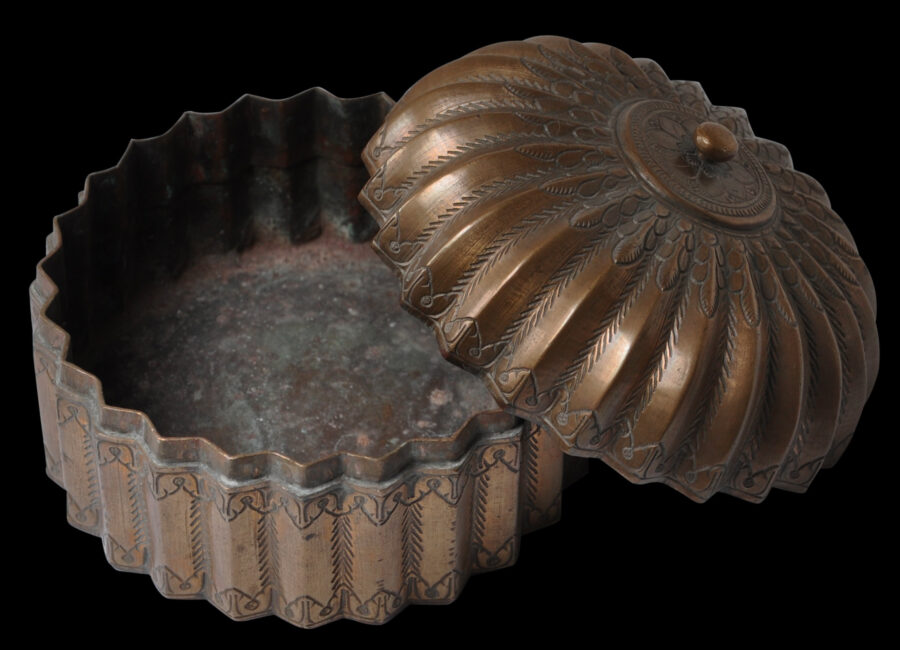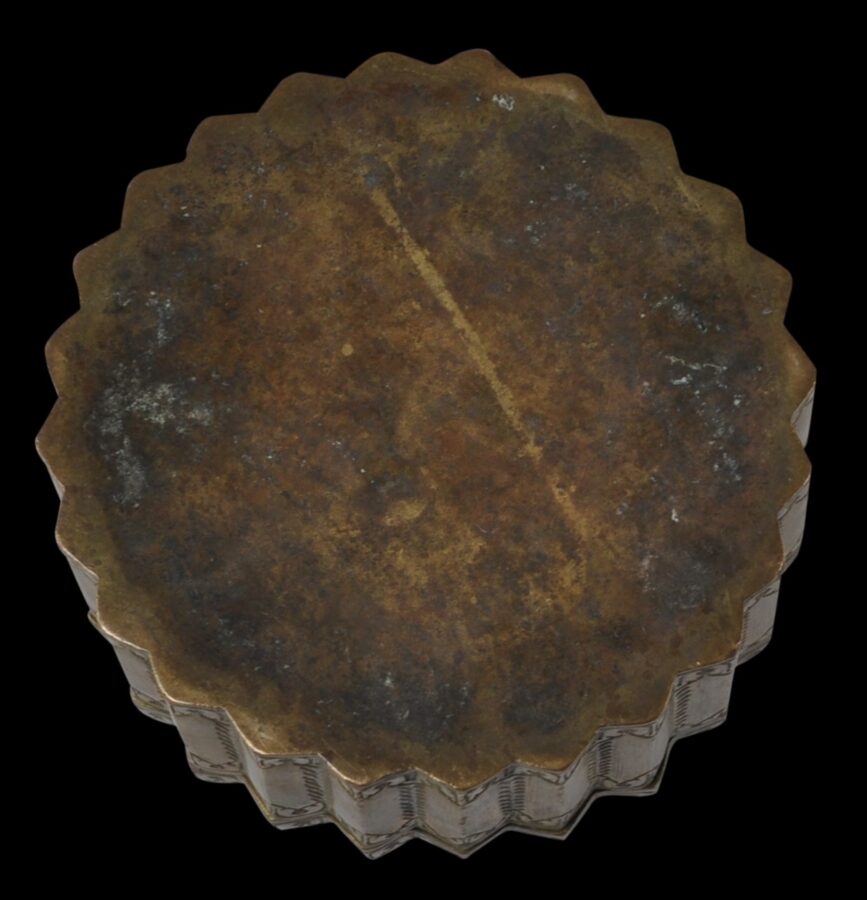This betel or paan box or pandan is a fine, decorative example of its type. Of circular form it has a well-fitting, convex lid, and ribbed sides giving it a Mughal architectural quality.
The lid has been surmounted by a solid-cast, flattened, spherical pull knob.
The box and cover are further decorated with engraving work in the form of flower and leaf motifs.
The lid and the base are aligned by matching some grooves that have been cut into the lid with similar grooves that have been cut into the interior rim of the base.
Betel chewing is a habit that unites Southeast Asia with the Indian sub-continent, parts of southern China and the Western Pacific. Whereas alcohol was associated with feasting, betel was the everyday social lubricant: it was offered to visitors to one’s home. And just as the English developed elaborate tea sets, Indians and Southeast Asians developed elaborate betel nut sets.
The actual nut comes from the areca palm tree. Typically, it is sliced, mixed with lime (usually obtained from crushed seashells) and then wrapped up in a betel creeper leaf and chewed. The lime reacts with compounds in the nut to produce alkaloids which give a mild narcotic effect.
The pandan here is in fine condition and is free from dents and repairs.
References
Zebrowski, M., Gold, Silver & Bronze from Mughal India, Alexandria Press, 1997.


